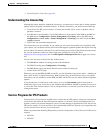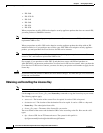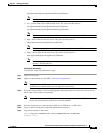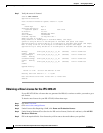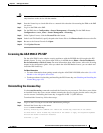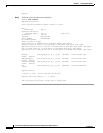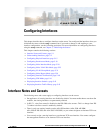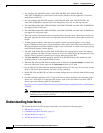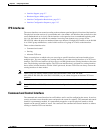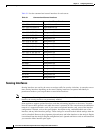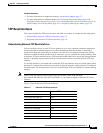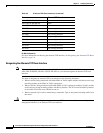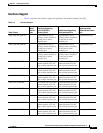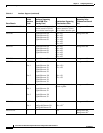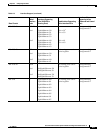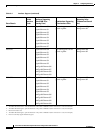
5-3
Cisco Intrusion Prevention System CLI Sensor Configuration Guide for IPS 7.1
OL-19892-01
Chapter 5 Configuring Interfaces
Understanding Interfaces
• Interface Support, page 5-7
• Hardware Bypass Mode, page 5-11
• Interface Configuration Restrictions, page 5-12
• Interface Configuration Sequence, page 5-15
IPS Interfaces
The sensor interfaces are named according to the maximum speed and physical location of the interface.
The physical location consists of a port number and a slot number. All interfaces that are built-in on the
sensor motherboard are in slot 0, and the interface card expansion slots are numbered beginning with
slot 1 for the bottom slot with the slot numbers increasing from bottom to top (except for the
IPS 4270-20, where the ports are numbered from top to bottom). Each physical interface can be divided
in to VLAN group subinterfaces, each of which consists of a group of VLANs on that interface.
There are three interface roles:
• Command and control
• Sensing
• Alternate TCP reset
There are restrictions on which roles you can assign to specific interfaces and some interfaces have
multiple roles. You can configure any sensing interface to any other sensing interface as its TCP reset
interface. The TCP reset interface can also serve as an IDS (promiscuous) sensing interface at the same
time. The following restriction applies: The TCP reset interface that is assigned to a sensing interface
has no effect in inline interface or inline VLAN pair mode, because TCP resets are always sent on the
sensing interfaces in those modes.
Note There is only one sensing interface on the ASA IPS modules (ASA 5500 AIP SSM,
ASA 5500-X IPS SSP, and ASA 5585-X IPS SSP), so you cannot designate an alternate TCP reset
interface.
Caution On the IPS 4510 and IPS 4520, no interface-related configurations are allowed when the SensorApp is
down.
Command and Control Interface
The command and control interface has an IP address and is used for configuring the sensor. It receives
security and status events from the sensor and queries the sensor for statistics. The command and control
interface is permanently enabled. It is permanently mapped to a specific physical interface, which
depends on the specific model of sensor. You cannot use the command and control interface as either a
sensing or alternate TCP reset interface.



